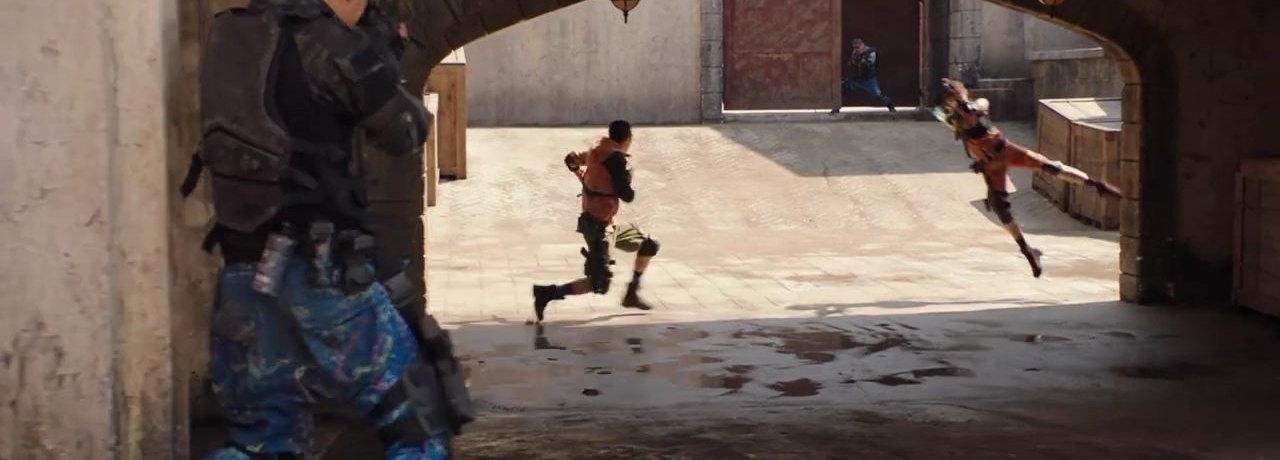
Aesthetics of Gameplay in Chinese Television Dramas
As part of an ongoing monograph project about video games in Chinese popular television, I shared work in progress at this year’s British Association of Film, Television, and Screen Studies (BAFTSS) annual conference, which was held at the University of Warwick from 26-28 March 2025. The conference theme was Global Aesthetics, so I used this as an opportunity to reflect on the ways a selection of examples from my corpus represented games and gaming on screen.
This year I was part of the Adaptation Studies SiG panel, along with papers about representations of men’s suicide in Swedish and American adaptations of the same novel, and the UK-produced reality show based on Squid Game. My contribution looked at three relatively recent Chinese dramas produced by Tencent:
- King’s Avatar (2019) is a live-action adaptation of a popular web novel (an animated version was released in 2017). The protagonist is a pro esports player of the fictional fantasy game Glory, who is pushed out of his star team, and starts again (anonymously at first) at a nearby internet cafe. In addition to having folks sit at computers and play the game, King’s Avatar animates the game that they’re playing. It’s presented as a fully-realised animated space governed by visual logics of martial arts spectacles, where players interact as their avatars, but not like a ‘real’ MMO where your avatar is centred in the screen. Crucially, players don’t change character – they don’t become someone else – and their actions and decisions flow across both levels of reality. The animated diegesis is activated by zooming in, or just cutting between computer screen and the fully-realised animated space.
- Cross Fire (2020) adapts existing video game IP, the Korean shooter of the same name from the developer Smilegate first released in 2007. By player count and total revenue, it’s one of the most popular video games of all time. In the TV show (which was also popular!) a player from the first team to win the national Crossfire competition in 2009 ends up in a map and voice chat with a high schooler eleven years in the future who wants to go pro himself. Cross Fire models gameplay through a live action ‘map’, where the actors stay in character but ‘perform’ as their avatars, albeit with elite fighting skills; rather than a fixed subjective point of view from the game we have the objective camera motivated by classical narrative convention. Arguably this is both a) more exciting for a viewer, and b) representing the players’ identification with and immersion in this virtual world. Occasionally we get a live-action map filmed from a body-mounted camera, blending the two modes.
- You Are My Glory (2021) kind of has it both ways: the game Honor of Kings is a MOBA (multiplayer online battle arena) that was released by Tencent in 2015. In 2017 a serialised novel about players of the game started publication on a semi-pro platform, and it seems permission to refer to the IP was sought after the fact. The TV series is in dialogue with both: in it, televisual aesthetics enmesh the game in the players’ diegesis. We see AR-like pop-ups, often quite showy, that breaks up shots of people holding their phones, or over-shoulder shots of thumbs tapping a screen. As with the other examples, it introduces the viewer to the game in quite a lot of detail, so that the protagonist’s later performance in a live Honor of Kings event has appropriate narrative weight. But in solving those practical concerns, You Are My Glory arguably visualises how the magic circle argument has been comprehensively unpicked: the game doesn’t stay in their phones, it leaks out – onto her window, the virtual map appearing on a table, the heroes appearing life-size at an event (but not quite diegetically).
One of the problems with adapting video games, historically, is that the pleasures of a game are hard to translate into linear narrative storytelling, so you have something that appeals to neither player nor non-player. There have been recent exceptions in American television, which is great. As Clara Fernández-Vara (2019) and others have pointed out, a video game arguably needs to be played to be fully realised as a text. A game stops being a bunch of code and art when a player makes meaningful choices, feels like they have some agency, exerts effort (such as taking several tries to defeat a boss or work out a puzzle). That means when you go to translate a video game into another medium, particularly one that isn’t interactive, carrying through some of what Bjarke Liboriussen (2023) calls the ‘nontrivial effort’ in playing a game can be really important in bridging that gap.
Two things interest me about this way of representing video games in television: 1) the aesthetics, or the strategies used to show how games are being played, something that is not visually dynamic, and 2) how that is enmeshed in discourses about citizenship, life stages, responsibility to the state, etc.
This collapsed magic circle, realised through these aesthetics of gameplay, are being used to leverage rhetorics wherein digital gaming is explicitly framed as a social good in an often-hostile cultural policy environment. There is a recurrent moral panic in China about gaming, where it has been called ‘digital opium’: this is why it matters that Tencent, arguably the world’s largest video game company, also produces television shows designed to sell the idea that beautiful well-adjusted Chinese citizens are bettered by engaging with online gaming. If you play MMOs you learn the value of teamwork, etc. These aren’t fantasies separate from ‘real life’, but an extension of it, with any division between diegeses being very blurry indeed.
